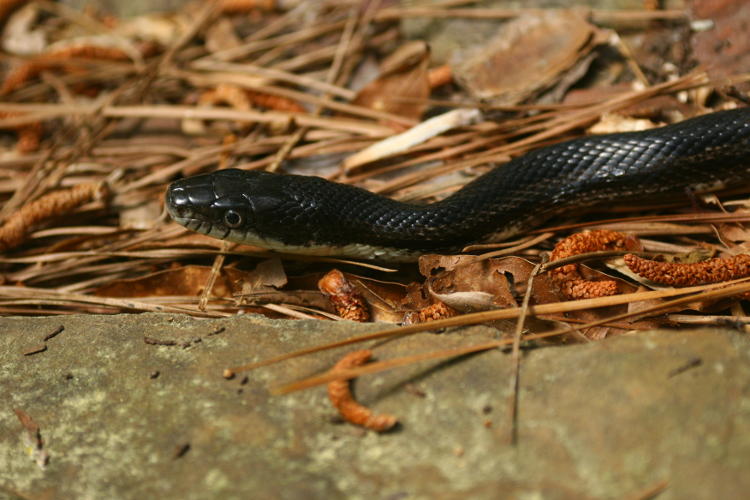
We’ll start off with a snake. Everybody loves snakes, right?
All of the images herein came from one trip to a local botanical garden a little over a week ago (I’m hedging because I don’t know when this will post) – a very busy day there as far as visitors, so this napping black rat snake (Pantherophis obsoletus) surprised me a little, given that it was snoozing right next to a bench. But it was in a sparsely-visited portion of the garden, and had remained unbothered. Mr Bugg and I managed to creep up on it for some closeups, which is what convinced me that it was asleep – snakes don’t have eyelids and thus sleep with their eyes open, and sometimes, as long as you don’t cross open sky or throw a shadow onto them, their brains never register your proximity. Cast a shadow across them, though, and they’ll take off like a shot. This one finally started stirring after a minute of our shenanigans, but we were already close at that time and I suspect this didn’t register as high on the threat level as approaching would have, though I’m only speculating now. Either way, we left it there to finish its nap.
Most of what we saw that day were waterfowl, though, and that was because they get free food and aren’t bothered by crowds. Oh, and flowers, of course, but there’s only so much you can do with flowers.
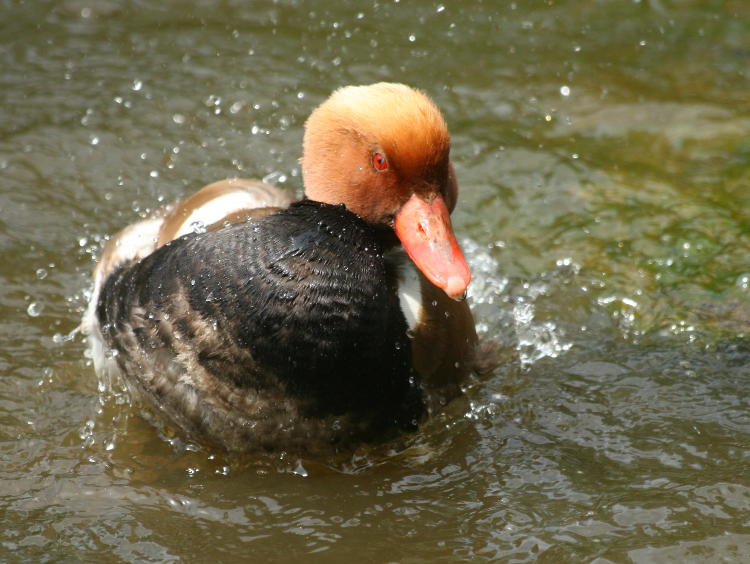
Not all of the ducks found there are native – the gardens feature a variety of resident exotics, like this red-crested pochard (Netta rufina) which is from Europe/Asia. Still, in such circumstances one can take the opportunity to get some behavioral shots that would be much harder to accomplish with a truly wild/feral species, and so we fired off a bunch of frames as this one preened and groomed itself. The bright light and its proximity allowed for some detailed and brief frames, so the water drops could be captured in midair.
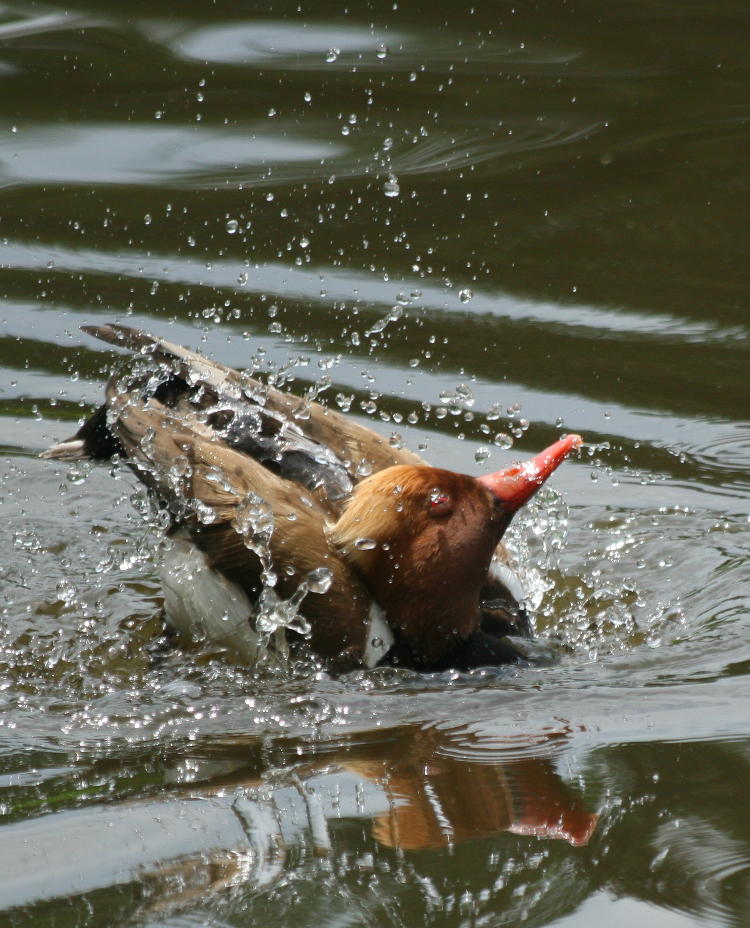
Sometimes, what you end up capturing is something a bit warped looking, which is part of the fun. There aren’t too many expressions that birds can display, so we interpret body positions as an indication, usually incorrect, of what’s going on or their underlying emotions. Like awkwardness. But my favorite lies below, with that little portion of the open beak poking out – you can almost imagine it stepped in an unexpected hole.
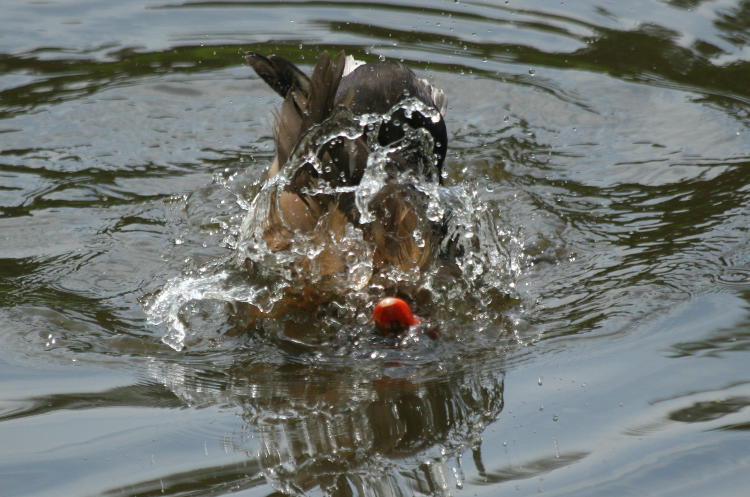
Other times, you might be observing behavior and trying to determine exactly what is going on, which can be exceptionally tricky – we filter everything through our own social structures and expectations, which have no application whatsoever to any other species, and truly knowing what’s going on socially among another species takes long experience and often the input of other, more knowledgeable people. Like this shot of two different species, a mallard (Anas platyrhynchos) on the left and a northern pintail (Anas acuta) on the right.
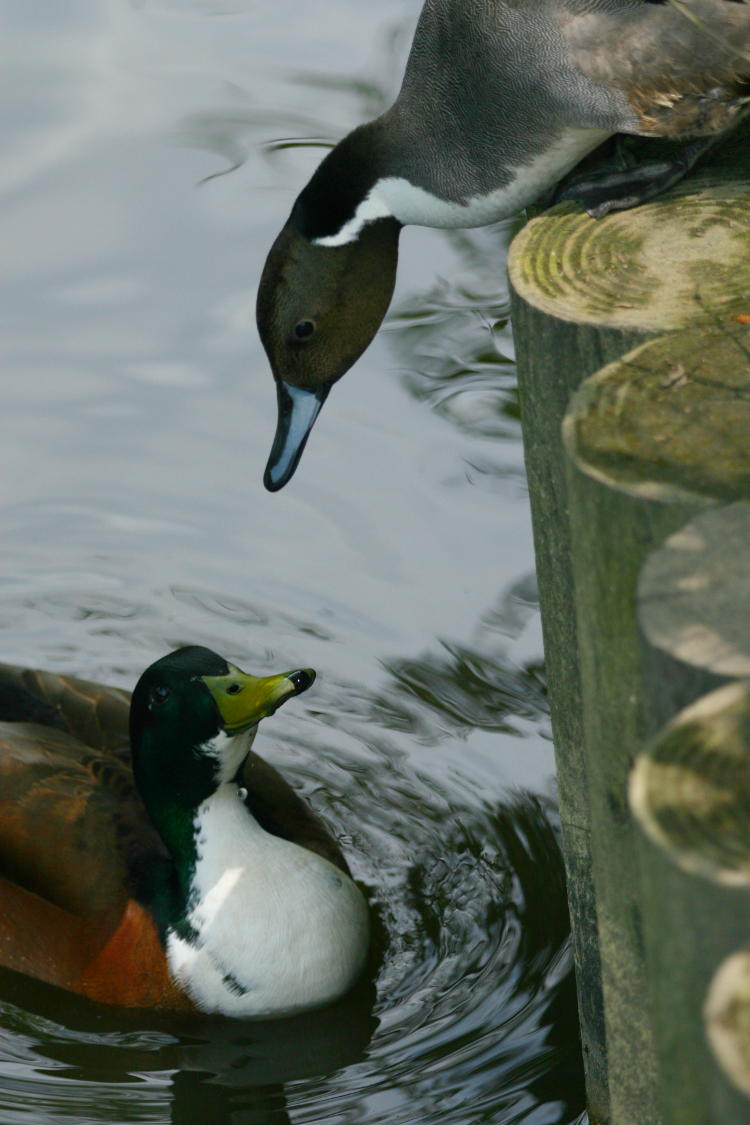
They certainly look to be interacting in some manner, like a neighbor leaning over her fence to share some gossip (all that we’ve seen have been males, by the way,) and someone more familiar with territorial protective instincts might have expected a squabble (heh, “squabble.”) But the completion of this tableau was anti-climactic; the pintail simply plopped into the water alongside the mallard and swam off a little ways. To the best of my knowledge, the mallard was swimming up just as the pintail decided it needed to go for a dip, and there was a momentary pause as they encountered one another – basically, the mallard in the way and perhaps wondering what was on the pintail’s mind as it loomed overhead, neither threatened or even concerned about the presence of the other. But at least, as the pintail swam out, it presented a nice profile to show off its plumage.
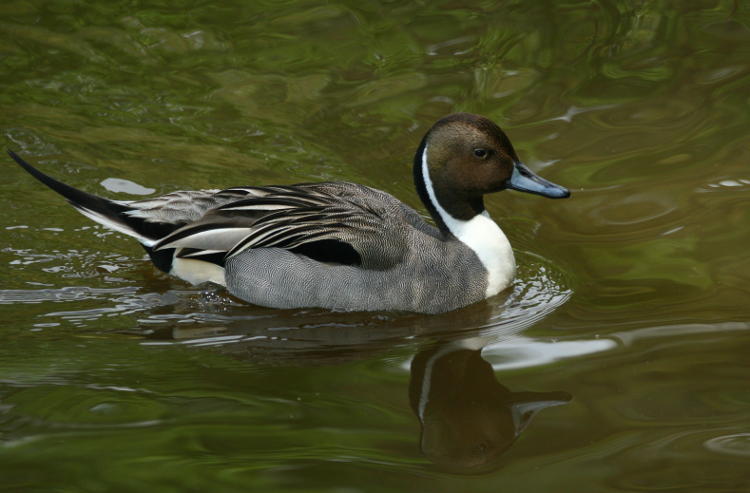
Mallards, of course, are a dime-a-dozen virtually everywhere in the US, and I usually don’t even bother with them anymore, but as one snoozed on the bank, I took the opportunity for a direct perspective.

In the case with most ducks and, really, a very wide variety of birds, the males have the brightest plumage, mostly considered by ornithologists to show off their worthiness to the females, while the females are considerably more muted in coloration, often very drab – they typically choose the males, but more importantly, they’re vulnerable to predators while on the nest, so they tend to blend in better to avoid attracting attention. There’s lots of speculation regarding the actual values of such differences, such as why the males aren’t less attractive to predators and how they determine a healthy female to court, but it must be working because it’s distinct in so many species. Yet not all.
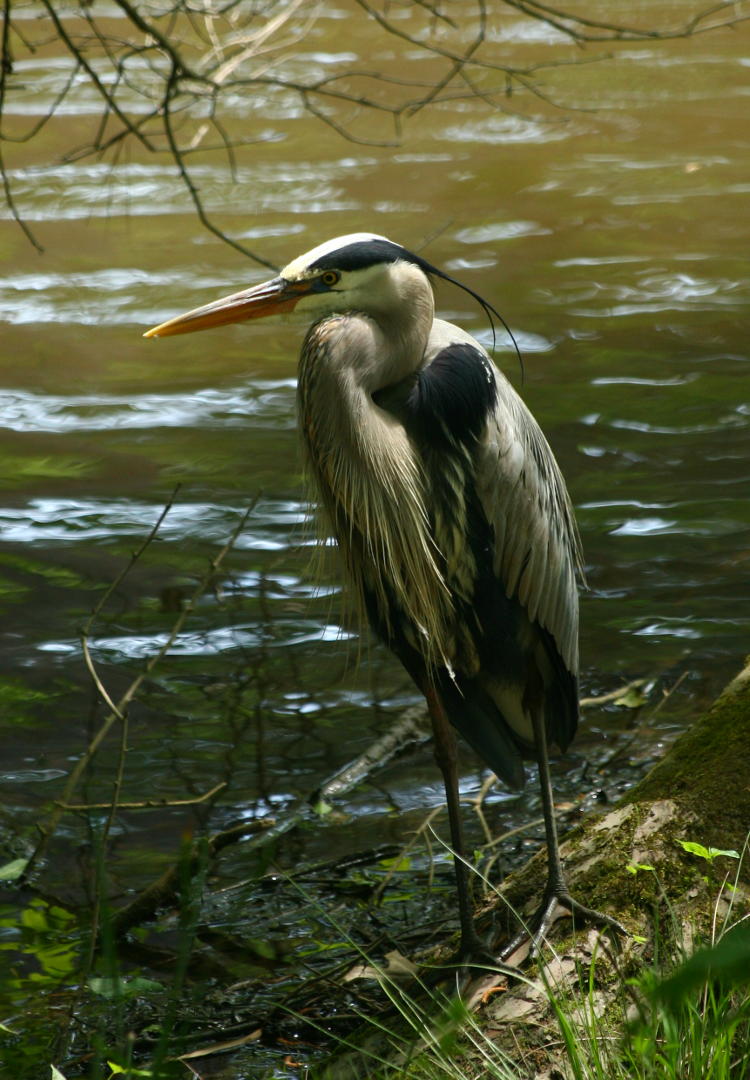
Canada geese, for instance, are difficult to tell apart by gender, as are great blue herons (Ardea herodias,) seen here. For years, there always seems to be one visible at the garden, and I suspect it’s the same one but have no way of knowing. From the size and the blue hints around the base of the beak, I’m leaning towards this one being a male – often, you have to see a pair alongside one another to feel comfortable with differentiating sexes. I couldn’t pass up this portrait, though I really wanted that twig out of the background, but whatcha gonna do? On our first pass, this one was simply dwelling in the shadows out of contact with people, perhaps digesting a small meal, but later on it became slightly more active.
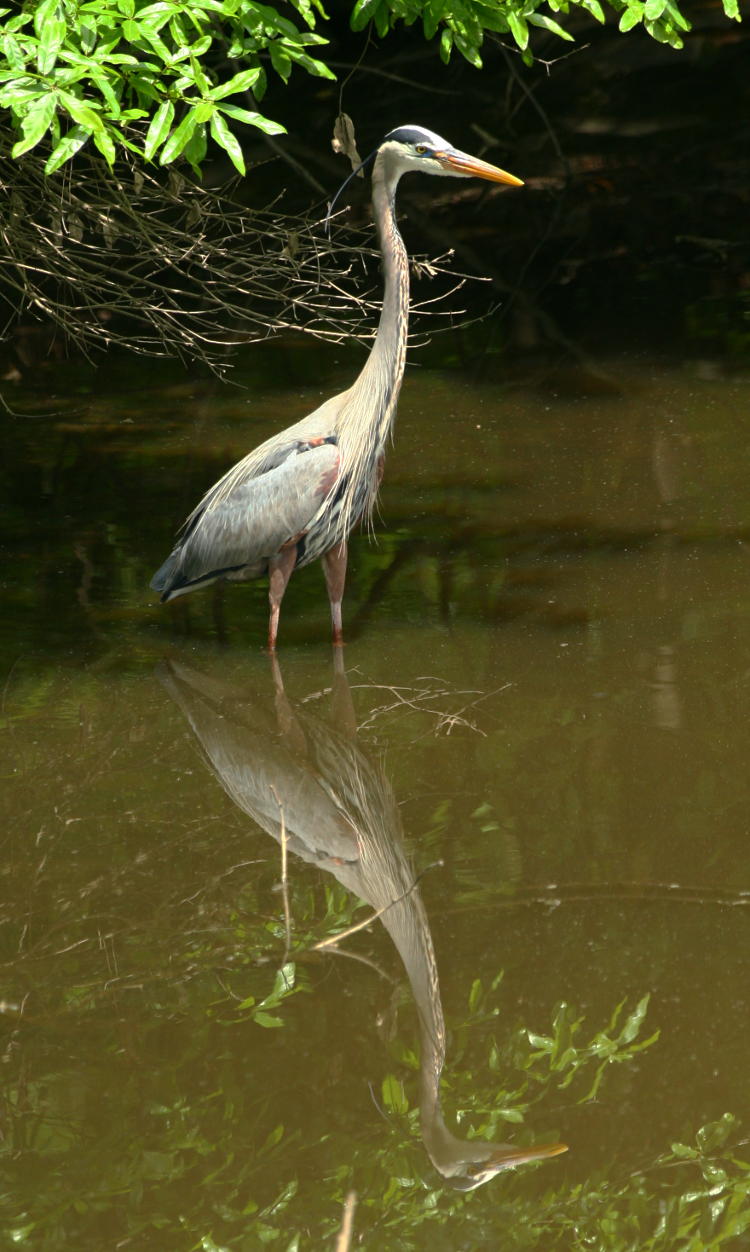
Believe it or not, the heron is in almost the same location as the previous photo, but we’re seeing it from a different vantage; the earlier shot was when it stood in those shadows behind it, and was taken from almost the opposite direction. I fired off several frames with space for that reflection, and choose this one from the limited distortion to the head and neck – ripples can make or break a water shot, especially if you’re after the reflections.
When we paused to look at the heron, it suddenly and without much warning snagged a small fish and swallowed it, in the space of a few seconds – too fast to get the cameras out (neither of us walks around with a camera in hand at all times, because it’s too easy to damage the equipment, especially when the footing might be tricky, but during pollen season it also helps keep the crud on the camera to a minimum.) Intrigued now, we waited, watching carefully, and another two minutes of patience paid off. There was a brief hint of alertness and repositioning that gave warning, and that was all.
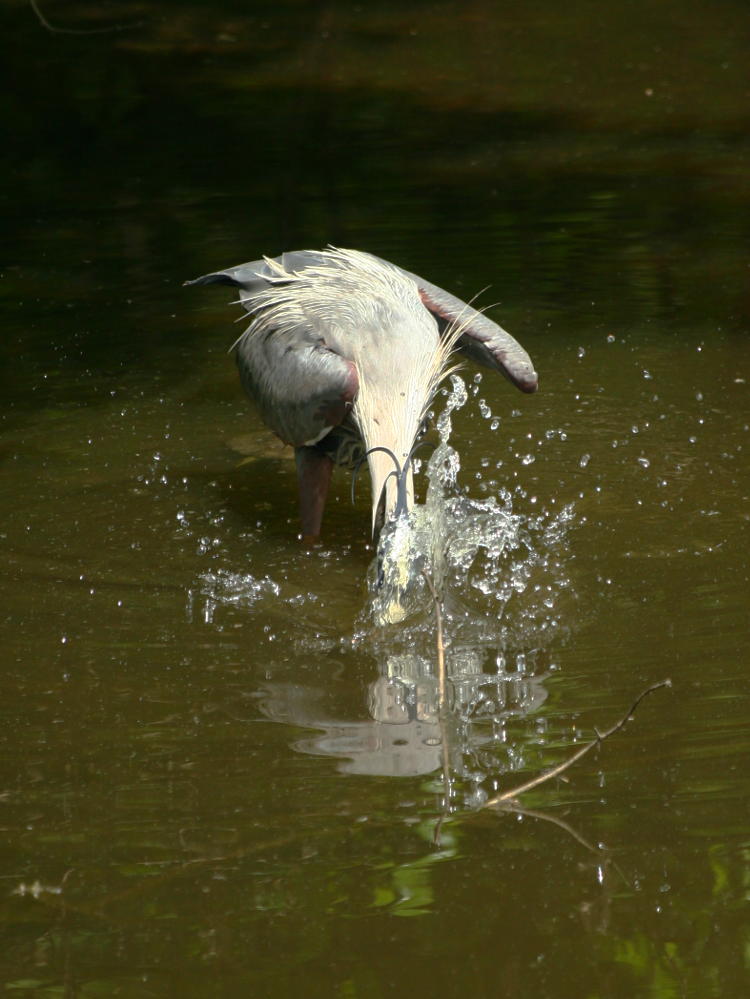
Herons are one of the easier waterfowl to catch making a capture, I have to admit, but timing still plays a role. The strike is lightning fast, because it has to be – fish, for some odd reason, try to avoid being eaten. Go figure.
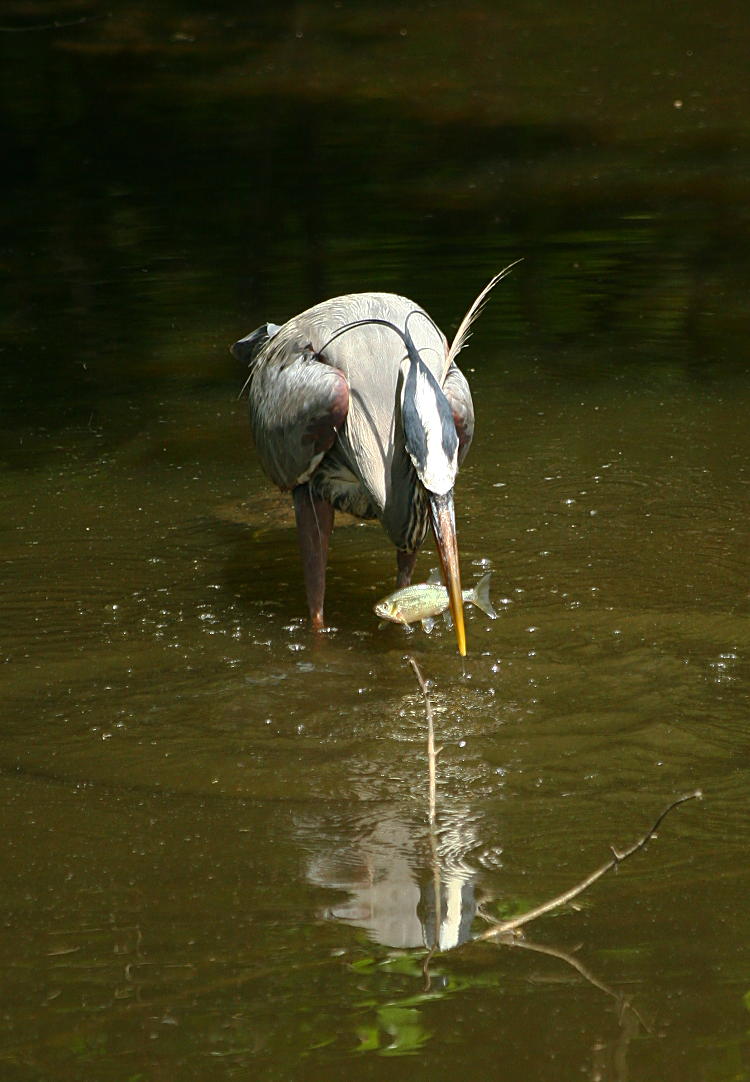
Not exactly a big meal here, but enough of them will provide, of course.
I have seen ‘the’ resident here at the gardens come down to hang out when people appeared with food for the ducks, which seemed slightly curious at first – they couldn’t care less about the duck food. Ducks are largely herbivorous and feed on submerged water plants, while herons are carnivorous and mostly feed on fish, though I’ve seen them taking out snakes and even a vole, but this means that the commercial duck food (that can be purchased from the gift shop) isn’t very palatable to herons. However, they’re good observers, and the duck food attracts turtles and especially catfish in the pond. On a previous visit, I’d watched a heron approach remarkably close to some people feeding the ducks, and did a few tight portraits as it hung out, but eventually I moved on. Less than ten seconds later, there was a splash and a cry of surprise from the people, and the heron flew past with a truly massive catfish. So much for my patience.

The heron juggled the little capture for a few seconds, getting the position right – most fish have spines along the dorsal fins which pretty much require them to have to be swallowed headfirst. So far too few have evolved spines that can face in any direction; instead, like countless other species, most fish thwart the predator aspect by reproducing in vast numbers so at least a couple offspring get through the meat grinder. Seems like an odd way to handle predation, but the “make lots” genes came out ahead of the “change body style” genes in such cases, and it still works.
Meanwhile, check out the ripples and reflections, just to show that I was lucky with the earlier portrait.
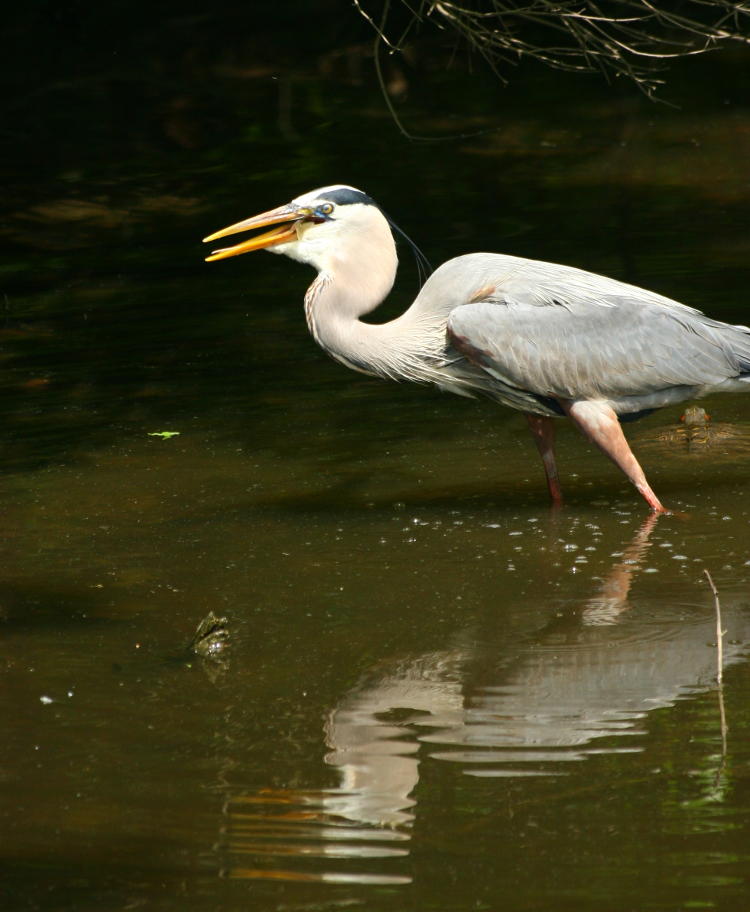
And down the little fish went. Meanwhile, I’ve been attempting to distract you from another detail visible in these two shots, one that I never spotted while shooting them, but look towards the rear of the heron. That’s a turtle head poking out (of the water,) likely a red-eared slider (Trachemys scripta elegans) – they’re not native either, but they might as well be, considering how many can be found in the area now, especially this pond. Its positioning is a little distracting, though.
Admittedly, I was in a garden so I did a few flower shots, but seriously, I consider them overdone so I tend to keep them limited, and try to find something a little different.
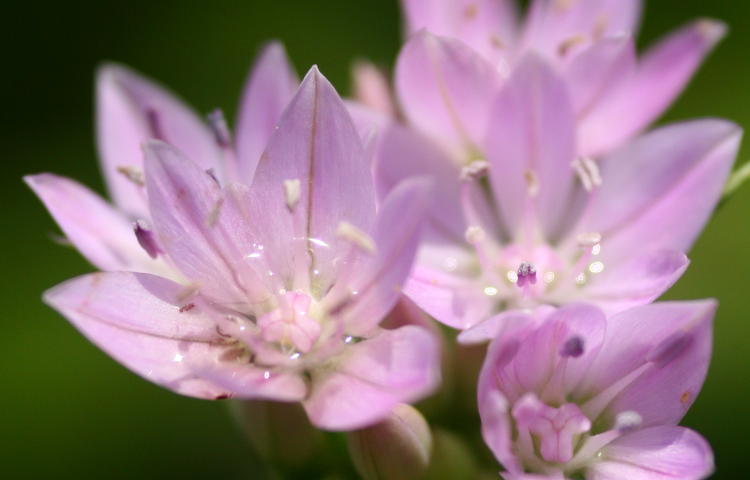
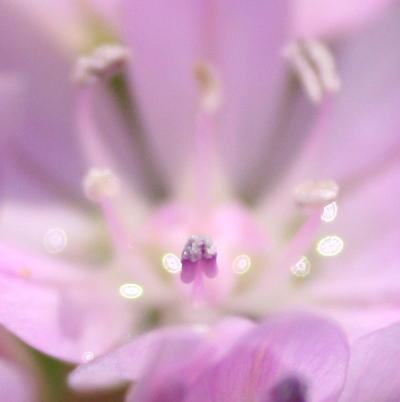 We were there late enough on a bright sunny morning, so I know this isn’t dew, but evidence of a watering system instead. I never bothered to identify these flowers, I was just after the sun on the droplets, which had an interesting effect when out of focus, as shown at right. However, I also had to try a small variation of the same framing, to show a little trick.
We were there late enough on a bright sunny morning, so I know this isn’t dew, but evidence of a watering system instead. I never bothered to identify these flowers, I was just after the sun on the droplets, which had an interesting effect when out of focus, as shown at right. However, I also had to try a small variation of the same framing, to show a little trick.
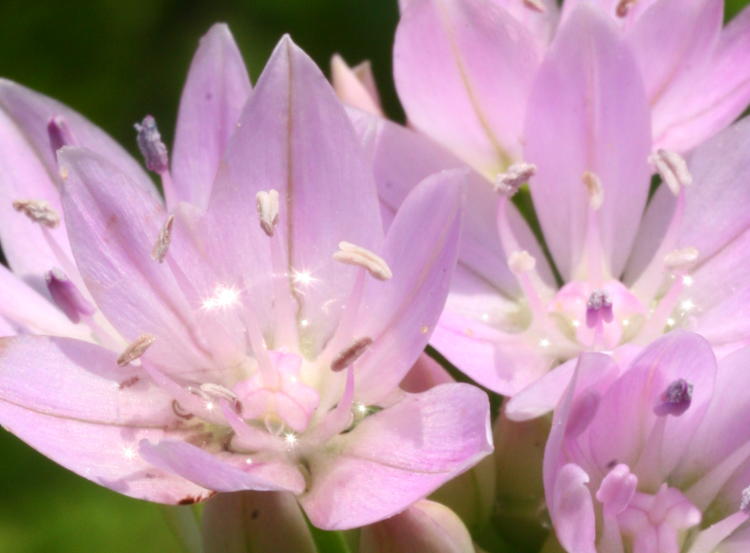
I’ve talked about this many, many times before, but with a point light source, using a small aperture can produce a starburst from it, and that little change adds a lot to the composition. I’ve done better, though.
And we’ll close with some variety of iris, I believe – there are a shit-ton of varieties and I haven’t located one that looks just like this, but we’ll go with it for now. Mostly it’s just here for the colors, but there’s this other little aspect that I saw during the sorting, that gives me the impression that they ran out of paper towels in the washroom.

As the “part 1” bit implies, there will be at least a part 2, and possibly more than that.



















































